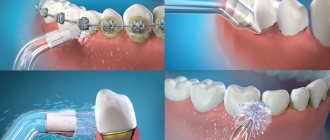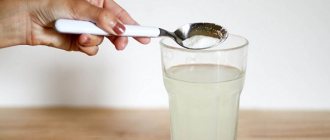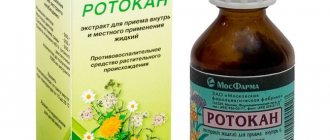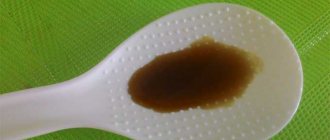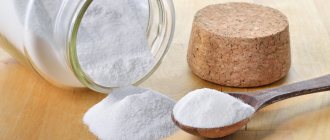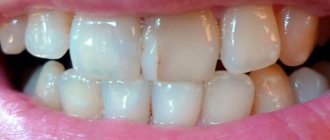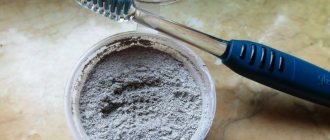It has long been known that toothache is one of the most unpleasant. Sometimes it occurs at the most inopportune moment, for example, at night, when going to the clinic is simply impossible. That is why folk remedies made from improvised ingredients are often used to solve such dental problems.
A real salvation from toothache can be rinsing your mouth with a solution based on soda and salt. The benefits of salt water have been known for a long time - this simple drug effectively disinfects the oral cavity, helps relieve swelling and pain. This and other popular mouthwashes will be discussed in the article.
When is rinsing indicated?
Rinsing with soda and salt will not cause harm even with frequent procedures. The main thing is to follow the recommendations and proportions for preparing solutions based on folk remedies.
Attention! Rinsing the mouth is effective in case of aching toothache. At the same time, the unpleasant sensations intensify towards evening. Remedies that are prepared with salt and soda can be the first aid for eliminating pain. They are able to reduce the process of inflammation in the tooth, reduce the number of pathogenic microorganisms in the oral cavity, washing them out. For severe toothache, rinsing can significantly reduce its intensity, but not eliminate the problem. Therefore, the solution will help you “get through the night,” but you need to make an appointment with the dentist in the morning.
Caries destroys the structure of teeth and causes pain. Rinsing allows you to temporarily relieve pain.
Soda and saline solutions must be taken to cleanse the teeth and oral cavity of accumulated bacteria and food debris. They are excellent harmless means for maintaining a clean mouth and frequent use, while constant use of toothpaste for these purposes can cause damage to the enamel. During the rinsing process, the surface of the teeth is cleaned of plaque and, therefore, whitens. You shouldn't expect quick results. For a visible effect, procedures must be performed regularly.
Contraindications to rinsing with soda-saline solution
A soda-salt solution for mouth rinsing, made in the correct proportions, is not capable of having a significant harmful effect. However, for some diseases and individual characteristics, a healing folk remedy can cause considerable harm to the patient’s health.
Young children should not rinse their mouths with soda-based products, even with severe toothache. Children under 3–4 years old do not yet understand the essence and technique of the procedure and can swallow a significant amount of liquid, which is why it is better to dip a cotton or gauze swab into the medicinal composition and help the baby treat the mucous membranes of the oral cavity by simply wiping.
The drug may cause harm if you have a traumatic brain injury, brain disease, or a predisposition to stroke. In addition, you can significantly worsen your health if you take it orally.
If a person is diagnosed with thyroid dysfunction, nephritis or tuberculosis, he should not add iodine to salt water. The same rule applies to pregnant and lactating women. You should not overuse mouth rinsing with soda, salt or iodine based mouthwash for nausea and vomiting.
Rinse rules
To ensure the effectiveness of rinsing your teeth, you should adhere to the following simple rules:
- Before the procedure, be sure to brush your teeth. This will remove any leftover food;
- The solution should be approximately 30°C: hot liquid can cause a burn to the oral cavity, cold liquid can increase pain. The only exceptions are cases of suppuration;
- Rinse only with a freshly prepared solution - this way the medicine will not lose its properties;
- During the process, place more emphasis on the diseased tooth, tilting your head in the right direction;
- You need to rinse your mouth with the solution, then spit it out, do not swallow;
- If the desired result is relief from toothache, then rinsing must be done for at least 5 minutes, and the liquid must be renewed every 30 seconds;
- Repeat the rinsing procedure as often as possible, preferably after each meal.
At the same time, it is worth understanding that following the rules can dull toothache and alleviate the condition, but does not exempt you from contacting a specialist or receiving qualified help.
Cleaning your teeth from food debris and thoroughly rinsing will relieve toothache.
Rinsing teeth with salt
Salt is a natural antiseptic. It promotes rapid healing of cracks and wounds on the oral mucosa, and also prevents the development of bacteria and stops their harmful effects. The saline solution relieves inflammation and soothes a sore tooth. The liquid penetrates macroscopic cracks and cavities and washes away food debris. Making a mouthwash is easy. Just dissolve table salt (1 tsp) in a glass of warm water.
Salt is one of the effective remedies used in dental treatment.
What salt should you use for rinsing?
The simplest salt is suitable for the procedure, which is stored in a cabinet in any kitchen. To rinse with salt for gum inflammation and toothache, you can use table, sea or iodized salt. But you need to give up powder with flavorings and bath salts. Dyes and other chemical components have an adverse effect on the mucous membrane.
By the way, if toothache or inflammation of the gums caught you on vacation at sea, you should not look for the nearest manufactured goods in southern countries. Simply rinse your mouth with sea water containing healing salt. The main thing is to collect water not near the shore, but away from the swimming area, in an area where it does not stagnate.
How to rinse your mouth correctly?
For the saline solution to work effectively, it is important to rinse your mouth correctly:
- Make sure the rinse solution is warm, but not hot or cold. In no case should you burn the already inflamed mucous membrane, and cold water, on the contrary, will increase the pain. By the way, if cold water helps relieve toothache, this indicates purulent inflammation of the nerve.
- Before rinsing, brush your teeth thoroughly: it is important to remove all food particles.
- The rinsing procedure should last at least 5 minutes, but the solution should be changed every 30 seconds.
- When rinsing with salt for a toothache, you should tilt the solution more towards the diseased tooth.
- You should rinse your mouth as often as possible, preferably once an hour.
- After rinsing, no matter how hard it is, you should not rinse your mouth with clean water. Try to be patient for at least 5 minutes.
Recipes for saline solutions and their uses
Here are the most effective recipes used for gum inflammation and toothache.
Simple saline solution
How to cook:
Take a glass of warm water (temperature about 30 °C), add 2 teaspoons of salt and stir well.
How to use
: Rinse your mouth according to the diagram below.
Salt and soda
Rinsing with soda and salt is effective for both gum inflammation and toothache. The mixture is also suitable for patients with acute reactions to salty foods. The tandem of salt and soda will be effective both in the presence of tartar and periodontitis.
How to cook:
Mix 1 teaspoon of baking soda and 1 teaspoon of salt in a glass of warm water.
How to use:
Rinse after brushing your teeth using the above method. Also, some dentists recommend using the solution after tooth extraction. In this case, you need to rinse your mouth very carefully so as not to injure the formed hole.
Salt + soda + iodine
You can add 2-3 drops of iodine to the solutions described above - it will enhance their disinfectant effect.
How to cook:
Mix 1 teaspoon of salt, 1 teaspoon of soda and 2-3 drops of iodine in a glass of water. The latter will enhance the disinfecting properties of the mixture.
How to use:
Rinse according to the indicated method every 2 hours.
Sea salt
How to cook:
For a glass of warm water, take 1 level teaspoon of sea salt.
How to use:
Rinse your mouth once an hour according to the above scheme. By the way, sea saline solution can be used not only for toothache and gum inflammation, but also as a preventive measure for various dental diseases. In addition, sea salt will give your teeth whiteness and strengthen the enamel.
Some people also use salt as toothpaste, first grinding it to a powdery state.
Salt + vodka
How to cook:
In a glass of warm water you need to add 2-3 tablespoons of vodka and 1 teaspoon of salt.
How to use:
It is worth using the vodka solution very carefully so as not to burn the oral mucosa. Rinsing is acceptable 2-3 times a day.
Salt with herbs
Saline solutions, if desired and necessary, can be supplemented with herbal decoctions. Simply put, the warm water in the glass should be replaced with a healing decoction. Which one? Choose the most pleasant and useful herbs for your situation.
- Chamomile and sage
. To prepare the solution, mix 1 part chamomile, 3 parts mullein and 2 parts sage and pour boiling water over the mixture. The mixture should sit to room temperature. Then you need to add 2 teaspoons of salt and rinse the tooth. - Oak bark.
1 tablespoon of oak bark should be poured with boiling water and kept in a water bath for 20 minutes, and then, after removing from the heat, leave for 40 minutes. The resulting cooled broth is decorated with 2 tablespoons of salt, then the crystals are stirred and used for rinsing. - Seed and strawberry
. For this decoction you should take 1 part of string, raspberry leaves, strawberries, and 2 parts of mint. Pour boiling water over the mixture of herbs and let it brew to room temperature, then strain and add 1 teaspoon of salt. You should rinse the tooth with the solution 9-10 times a day. - Plantain, chamomile and rose petals.
This aromatic mixture should be poured with boiling water and allowed to brew, then add salt and rinse the tooth. The solution will relieve pain, soothe and disinfect the oral cavity.
Herbal infusions are one of the most effective salt supplements. However, in order to prepare the right decoctions, you should follow several rules:
- Prepare the decoction only in enamel or glass containers.
- Adjust the heat to low.
- Use the cooled liquid immediately.
Does salt help gums?
Saline solutions are an excellent remedy not only for strengthening and whitening teeth, but also for sensitive and bleeding gums. Table, sea, and iodized salt are also suitable for preparing salt potions. Use rinses daily, 2 times a day, and within a week you will notice that your gums have become healthier.
However, you also need to rinse your gums with salt correctly:
- Brush your teeth thoroughly with the paste.
- Then remove any remaining food from the interdental spaces using dental floss.
- Rinse your mouth for 30 seconds and repeat the procedure several times.
Salt rinses for gum inflammation
If, while brushing your teeth, you begin to notice blood on the brush, this clearly signals inflammation of the gums and requires an early visit to the dentist.
Salt rinses for gum inflammation can be an excellent aid. Together with herbal decoctions, this white powder can relieve pain, inflammation and swelling of tissues and significantly simplify the patient’s life.
Here are the most popular recipes for salt compositions used for gum inflammation, in addition to the standard ones given earlier:
- Banana paste
. To prepare, several banana skins should be ground into powder. Add 1-2 tablespoons of olive oil and 2-3 tablespoons of pre-crushed sea salt to the resulting composition. You can lubricate the affected areas with the paste, in a couple of days the gums will become strong and healthy - Thyme, oak bark, sage, chamomile
can also be mixed with table salt and soda. You should rinse your mouth with the resulting mixture 1-2 times a day.
Is it possible to rinse your gums with baking soda, without salt?
Of course you can. Baking soda is found in almost every kitchen, as is salt. But, unlike salt, soda only cleans, disinfects and deodorizes teeth and gums without causing unnecessary irritation.
To prepare a soda solution:
- Mix 1 teaspoon of baking soda with a little water. The mixture should become similar in consistency to toothpaste.
- Apply the mixture to your teeth and gums and thoroughly brush your teeth with it in the usual way (with a brush).
- After washing off the composition, you will be surprised at how clean and polished your teeth become, how fresh your breath becomes, and how the soda managed to neutralize the increased acidity of the oral cavity.
Rinsing gums with baking soda
A very simple and at the same time useful procedure is rinsing the gums with soda. After all, baking soda is found in almost every kitchen. To rinse your gums, dilute one teaspoon of baking soda in a glass of boiled and cooled water. A solution of soda can be used for gum inflammation.
When should you not rinse your gums with salt?
You should not rinse your teeth and gums with salt if you suffer from severe tissue inflammation. In such cases, the solution can only worsen the situation. If you are experiencing unbearable pain and suspect serious tissue inflammation, replace the saline solution with one of the following:
- Aloe juice will perfectly eliminate inflammation. To rinse, you need to take freshly squeezed juice and dilute it in half a glass of water. You need to rinse your mouth three times a day.
- Golden mustache also perfectly strengthens sore gums. To prepare the solution, you need to grind a leaf of the plant, and then pour a glass of boiling water over it. The mixture should sit for 30 minutes and rinse your mouth after brushing your teeth every morning.
- Sage is one of the most effective remedies for bleeding gums, which prevents the spread of inflammation. To prepare the solution, you need to infuse 1 tablespoon of sage in 300 ml of boiled water. The composition can be used for rinsing, compresses, and oral baths.
- Oak bark perfectly relieves inflammation of the oral mucosa. To prepare the solution, boil 2 tablespoons of oak bark in half a liter of water, then let the mixture brew and use for rinsing.
- Chamomile flowers are an excellent remedy for gingivitis. To prepare the solution, you need to infuse one spoon of flowers for half an hour, and then cool the solution. The mouth should be rinsed systematically until complete healing.
Instead of a solution of salt and soda, you can also use essential oils to treat gum inflammation. The most popular are:
- Black cumin oil. Perfectly disinfects, relieves pain, eliminates bleeding. It is recommended to rub 1-2 drops of oil into the surface of the gums or make oral baths.
- Tea tree oil is an excellent natural antiseptic that eliminates pathogenic bacteria and relieves bleeding and discomfort. To prepare the solution, you need to dilute 2-3 drops of oil in a glass of water and rinse your gums after each meal.
- Sea buckthorn oil quickly heals inflamed tissues and relieves pain. The oil can be used for mouth baths, applications, rubbing, or simply hold a tablespoon of oil in your mouth for 2-3 minutes.
An effective and, most importantly, safe alternative to natural remedies is Asepta Active mouth rinse, used for gingivitis, periodontitis, stomatitis and toothache. The product has a pronounced antibacterial effect, prevents inflammation and bleeding of the gums, prevents the formation of plaque and freshens breath.
Baking soda rinse
Baking soda is known for its antifungal effect. A solution with soda gently cleanses the oral cavity and tooth enamel, blocks the development of pathogenic microbes, disinfects the oral cavity, and reduces swelling. In order for teeth rinsing to solve existing dental problems, you must follow the recommendations above and maintain the proportions. Water for rinsing your mouth must be boiled. Use 1 tsp per glass of water. soda The contents of the container must be mixed well, the liquid should be cloudy, whitish, sediment at the bottom is unacceptable. If you are worried about acute toothache, then it is permissible to double the amount of soda.
Soda solution is an excellent oral disinfectant.
A solution with salt, soda and iodine
A three-component solution with iodine, salt and soda will be an excellent help for toothache. Iodine actively acts on pathogenic microorganisms, and in combination with simple products can work wonders. This composition of the folk medicine will relieve pain from infection in the dental canals, help with bleeding gums and treat many inflammation processes in the oral cavity. The product is prepared as follows: you need to take a glass of warm water, dissolve 0.5 tsp. baking soda and salt and add 1 drop of iodine. All ingredients should be mixed well. It is necessary to rinse the mouth thoroughly so that the liquid penetrates into all places where bacteria may be located.
A solution of soda + salt + iodine is an excellent remedy for treating the oral cavity and relieving pain.
Why is it useful to rinse your mouth with a soda-saline solution?
The soda-salt mixture does not treat diseases of the teeth, mucous membranes of the oral cavity and gum diseases such as caries, gingivitis, and periodontal disease. However, this handy remedy can help a person out if he has a toothache or swollen gums, but for some reason it is currently impossible to get to the dentist.
Baking soda (sodium bicarbonate) is used not only for cleaning dirty surfaces or in culinary production. A solution based on this product is actively used for rinsing and washing the mouth and teeth. Additional ingredients in the composition of the healing product may include iodine, salt and essential oils in various proportions. In some recipes, the usual table salt is replaced with sea salt, which is more expensive and has greater benefits.
The benefits of soda and soda-salt mixtures for the health of teeth and soft tissues of the oral cavity are multifaceted. This home remedy can help solve a whole range of dental problems because:
- Has an antimicrobial effect.
- Helps prevent harmful acids from destroying tooth enamel.
- Stops the inflammatory process.
- Helps make tooth pain less painful and the patient’s condition more comfortable.
- Can help get rid of tartar and plaque.
When preparing mixtures for rinsing the mouth and performing oral baths, the ingredients should be measured in strict accordance with the proportions recommended in the recipes in order to avoid burns of the oral mucosa, damage to the integrity of the enamel and other painful reactions.
